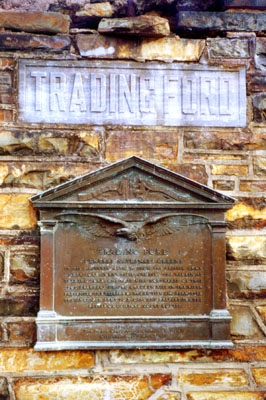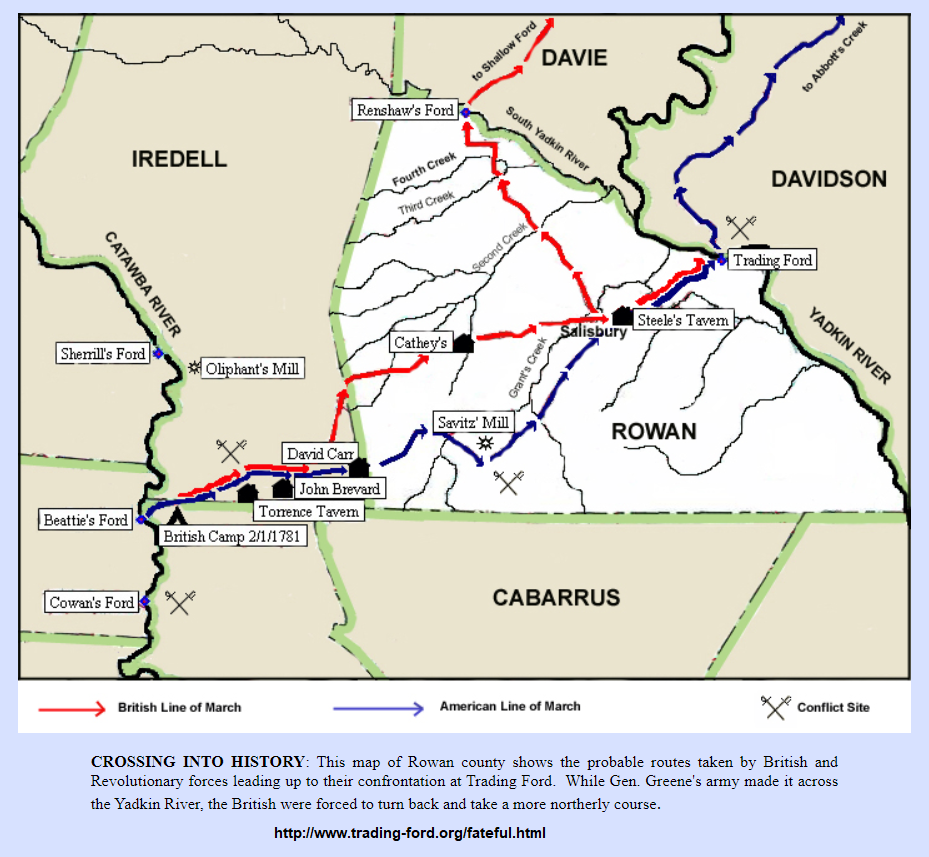An American Revolution Skirmish for Four Allred Brothers
By Alice Allred Pottmyer
From December 1780 through the end of February 1781, four Allred men were with their North Carolina Militia unit with the forces of General Nathanael Green near the Cheraw Hills in South Carolina. General Greene was commander of the American forces in the South. Four of the men were the sons of Thomas Allred: James, William, Elias and John.
The Calvary members furnished their own horses. Colonel Banastre Tarleton, defeated at the Battle of Cowpens in South Carolina, January 15, 1781, was heading north and chasing the Americans under the command of General Daniel Morgan that had just defeated them. During the Battle of Cowpens, Lord Charles Cornwallis and his forces were 25 miles behind Tarleton’s forces. The Tarleton and Cornwallis forces had joined together as they advanced northward into North Carolina in pursuit of the Americans.
After the victory of Cowpens, Gen. Greene began marching his Army to join with the forces of General Daniel Morgan. Gen. Greene sent the Calvary Militia unit from North Carolina ahead because the horse unit could move faster. They followed the Pedee River north to Salisbury. General Greene, with his army followed. The Calvary militia made a rapid march to meet with and assist Morgan. The Morgan forces were “retreating from Wallis.” In Salisbury, the North Carolina Cavalry Militia unit found Morgan with his army marching through town. It was cold and rainy and was miserable for all concerned.
On February 1, 1781, the Americans marched through Salisbury, North Carolina, and headed seven miles north to the Trading Ford, a crossing place on the Yadkin River. The Americans gathered all the flat boats they could and began crossing the 1,800 men and supplies, etc. They crossed for two days.
On February 2, 1781, Gen. Morgan sent the North Carolina Company of Calvary with about 100 of his riflemen from Virginia to guard the river crossing until the main army could be ferried across the Yadkin River. On February 3, Cornwallis himself arrived in Salisbury and discovered the Americans were almost across the river. He sent a contingent to stop what they could. It was nearly midnight and still raining. The British were not in familiar territory. About 100 Virginia rifleman and about 50 North Carolina Militiamen (including the four Allred men) were hiding in the bushes and behind trees to fire upon the British. According to the pension application of Elias Allred, “we fired two rounds” and then got on the flat boats to the other side of the Yadkin. The date of this skirmish was very late on February 3, 1781.
The British decided to cross in the morning. Because of the heavy rains, the river rose two feet over night. The current was very strong and the river was full of big trees and other debris. It was then too dangerous to cross. The
British headed west along the river. They were able to cross in five or six days. However, the three month militia term for the Allreds and their unit was up. They returned to Randolph County (about 50 miles away).
The Americans were able to travel across North Carolina even though they were closely followed by the British and then regroup, re-supply and recruit just over the Dan River in Virginia. The two forces met at Guilford Courthouse on March 15, 1781, and fought. The British won the first day, but they lost 504 men in the fighting. Cornwallis decided not to fight the next day because he “could not afford any more victories like that.” He marched his forces eastward toward Wilmington, North Carolina. They spent two days at Bell’s Mill in Randolph County near the Deep River in an attempt to rest and re-supply.
In the fall of 1781, the Cornwallis forces arrived in Yorktown, Virginia, and planned to get on British ships. However, the French Navy was in the Chesapeake Bay and the Continental Army and Militia were behind him on land. The British surrendered October 19, 1781.


